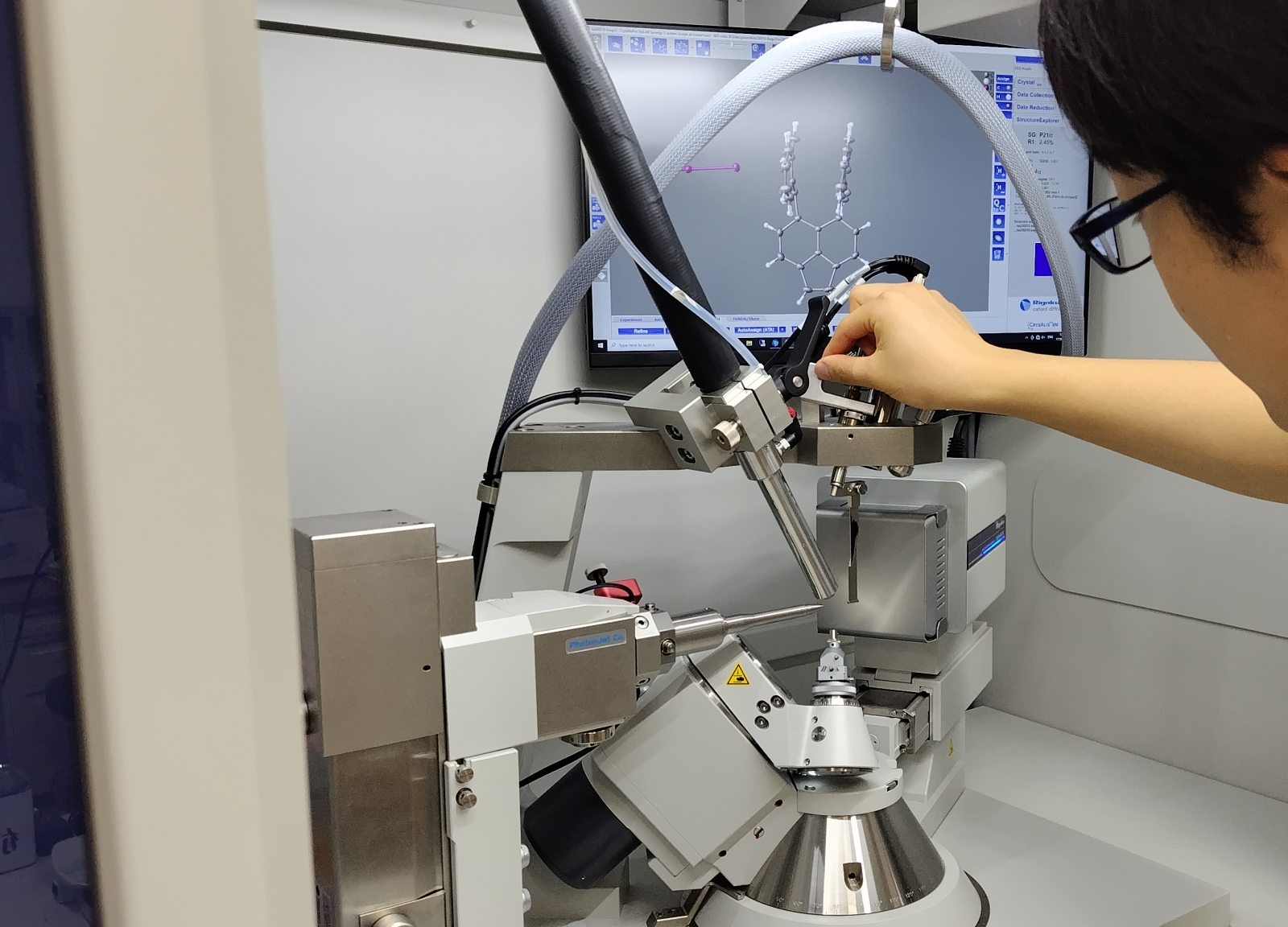
A group of researchers from Hokkaido University has provided the first experimental evidence of the existence of a new type of chemical bond: the single-electron covalent bond, theorized by Linus Pauling in 1931 but never verified until now. Using derivatives of hexaarylethane (HPE), the scientists were able to stabilize this unusual bond between two carbon atoms and study it with spectroscopic techniques and X-ray diffraction. This discovery opens new perspectives in understanding bond chemistry and could lead to the development of new materials with innovative applications.
In the cover image: study of the sigma bond with X-ray diffraction. Credits: Yusuke Ishigaki
After nearly a year of review, on September 25, a study was published in Nature that has sparked a lot of discussion, especially among chemists. A group of researchers from Hokkaido University synthesized a molecule that experimentally demonstrated the existence of a new type of chemical bond, something that does not happen very often.
In a world where we are more or less accustomed to NASA's bombastic press conferences and the announcement of a new miracle drug almost every week, it remains a rare event to witness equally grand headlines concerning chemistry, particularly basic chemistry. Yet in recent days, announcements have flourished about how this discovery could revolutionize chemistry textbooks and everything we know about chemical bonds. The excitement within the chemistry community is quite palpable over a publication that, in any case, is truly extraordinary, perhaps precisely because it does not happen often. However, it might be equally premature to rush to update general chemistry books just yet.
But before understanding why this study is so important for the comprehension of covalent chemical bonds, let's start from the beginning and talk about what a covalent bond is. A covalent bond occurs when two atoms share one or more electrons, thereby creating around them a sort of "shared" electronic cloud concentrated in the space between the two atomic nuclei. Without going into details, this sharing of electrons lowers the energy and makes the molecule more stable, thus forming the chemical bond. Its characteristics (length, strength, electron imbalance toward one atom or another, etc.) depend on the properties of the atoms involved in the bond. More or less, this definition of a covalent bond has remained unchanged since it was formulated by Lewis in 1916 and has been experimentally proven many times, to the extent that it is considered one of the foundations of modern chemistry.
In 1931, Linus Pauling theoretically proposed the possibility of a covalent bond where a single electron (rather than two) is shared between two atoms. This theory, which he exemplified with the H2+ molecule, has never been experimentally verified and is generally used to visualize unstable transition states. The problem with this type of bond, hypothesized by Pauling and called the single-electron sigma bond, is that it is extremely unstable. Therefore, any molecule exhibiting it would immediately undergo some type of electronic rearrangement, as occurs in reactions like the Cope rearrangement, or in very rare cases in chemical reactions involving radicals. In any case, they have never been isolated and have always been studied theoretically.
The researchers of the study published in Nature exploited the characteristics of a class of molecules, hexaarylethane (HPE) derivatives, to synthesize and study this type of bond spectroscopically. Due to the intrinsic properties of HPEs, the carbon-carbon bond at the center of the molecule is much longer, and this unusual length made it possible to obtain a stable single-electron bond by removing one of the two electrons from the bond between the carbon atoms. The researchers were then able to study it using both spectroscopy and X-ray diffraction techniques, effectively "photographing" a new type of chemical bond that, until then, remained in the realm of hypotheses.
The achievement of the Hokkaido group is certainly remarkable, and the almost year-long review process somewhat confirms that we are dealing with a potentially revolutionary article in a discipline like chemistry, which, despite always being at the forefront in many fields of application, does not often offer great thrills in its more theoretical and basic aspects. It is not surprising, then, that the tones used to announce the publication of this paper have often been overly enthusiastic. We are certainly still in a preliminary phase, and this study needs to be replicated and validated before incorporating the single-electron bond into general chemistry textbooks. The potential to revolutionize what we know about chemical bonds is certainly there, but the road ahead is still long.
What seems more concrete, however, is exemplified in the words of the study's lead author, Takuya Shimajiri: "These results therefore constitute the first experimental evidence of a carbon-carbon single-electron covalent bond, which could pave the way for further developments in the chemistry of this scarcely explored type of bond."
A deeper understanding of the functioning of chemical bonds, particularly this type involving an odd number of electrons, is very important because it allows the scientific world to further explore the behavior of matter and thus expand the range of applications in materials science and beyond. The presence of an odd number of electrons, as well as the presence of radicals, is often associated with the tendency of materials to conduct electricity. The study of single-electron sigma bonds could open the door to the design of new materials and new applications. In short, a first step, seemingly related only to the often-considered more boring part of general chemistry, which could potentially revolutionize what we know and lead to new and more sophisticated practical applications. Perhaps it was worth waiting a year to see it.



